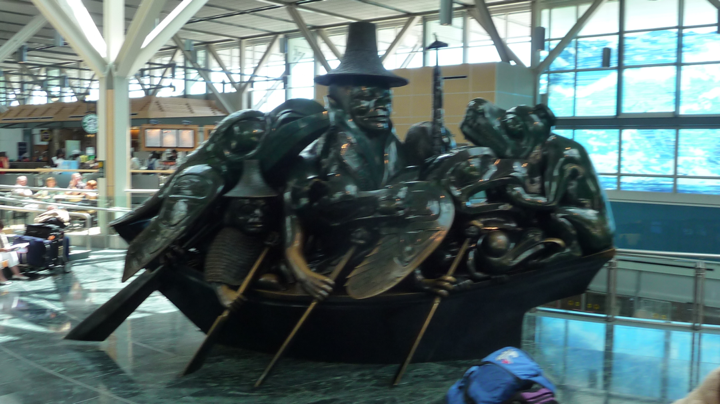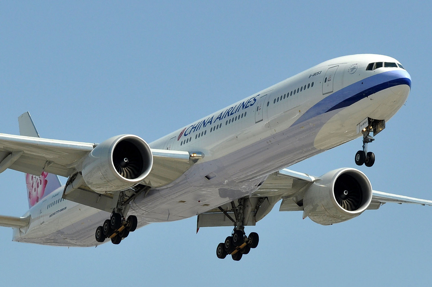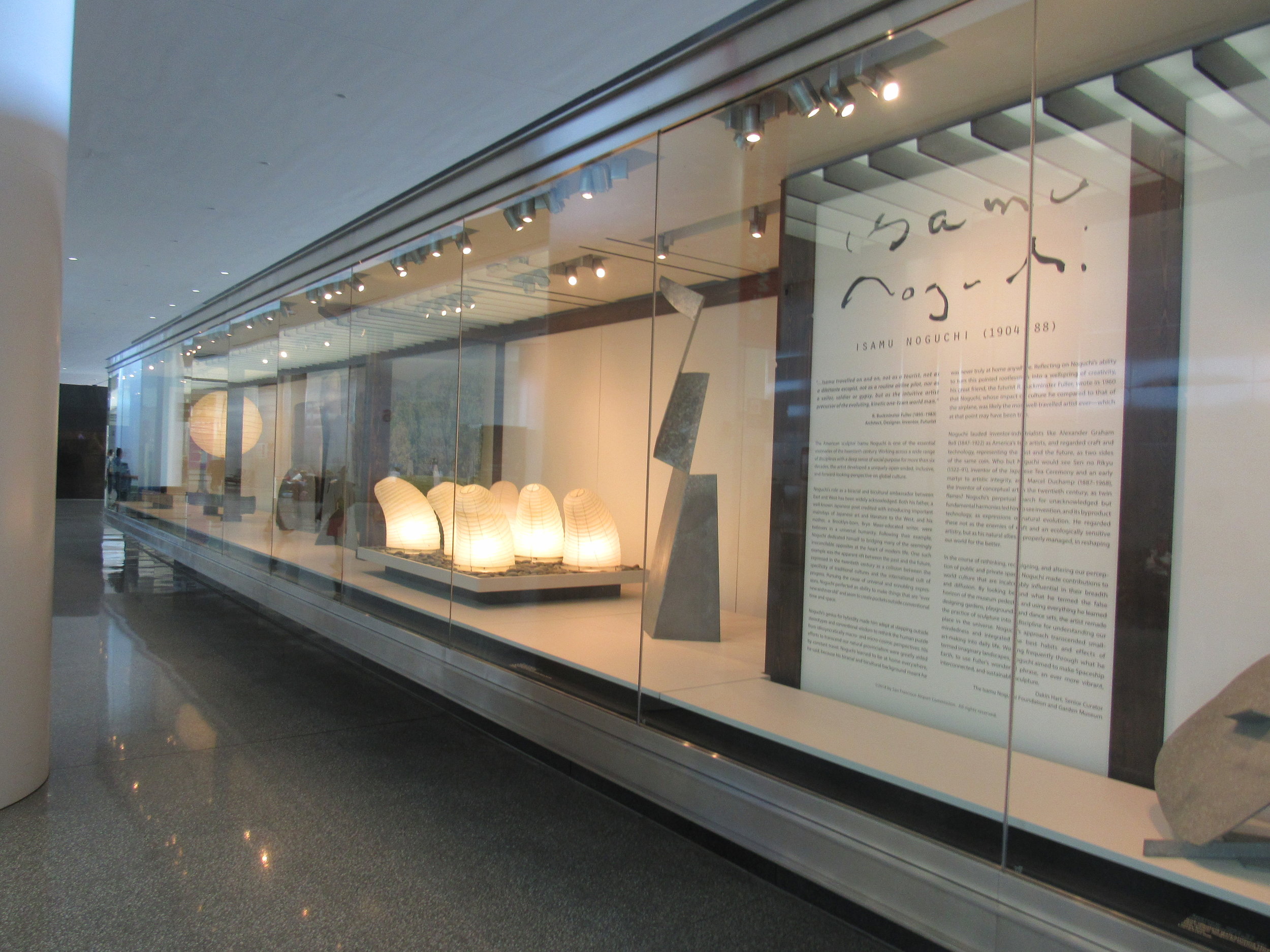San Francisco - SFO
/The traditional U.S. gateway to Asia
From the days of sailing ships to the flight of the China Clipper, San Francisco's ports have long been the primary connecting point for passengers and cargo between the USA and Asia. California's Gold Rush of the 1850s and construction of the Transcontinental Railroad were not just logistical drivers that put San Francisco in its hub position, but also the reasons for the initial wave of Chinese immigration to North America.
Despite a troubled social and environmental history, Asians stayed in the city, and more waves followed, creating iconic neighborhoods like Chinatown and Japantown in the city proper, and giving the entire Bay Area an exciting and unique cultural mix like nowhere else on Earth.
Universities, research centers, military, electronics and Internet industries all promote a trans-Pacific worldview, and school systems in the region routinely teach Asian languages.
All this demand has resulted in a cornucopia of choices to cross the Pacific, with over 20 daily departures:
- To Tokyo-Narita, United and ANA-All Nippon each have a daily nonstop. To Tokyo-Haneda, United and Japan Airlines each fly daily.
- To Osaka-Kansai, United flies nonstop daily.
- To Seoul-Incheon, there are three daily nonstops; one each on United, Korean Air, and Asiana.
- To Beijing, United and Air China each have a daily nonstop.
- To Shanghai-Pudong, China Eastern and United each have a daily nonstop.
- To Chengdu, in China's western Sichuan Province, United has a 3-times-per-week nonstop.
- Guangzhou is reached daily by China Southern; 4 flights per week are nonstop, and the other 3 stop in Wuhan, capital of central China's Hubei Province.
- Hong Kong enjoys twice-daily nonstops on Cathay Pacific, plus a daily nonstop each on United and Singapore Airlines, and new nonstop service on Hong Kong Airlines which started in March 2018.
- To Taipei, China Airlines and United each offer daily nonstops; EVA Air flies it twice-daily.
- Manila has a daily nonstop on Philippine Airlines.
- Singapore is now served nonstop twice daily: one with United and one with Singapore Airlines - and those are mighty long flights, indeed. Additional nonstop service will be added in late 2018. The city is also reached with a one-stop on Singapore Airlines via Hong Kong.
For domestic flights, United is by far the dominant carrier at SFO with a full-fledged hub operation with commuter, regional, and transcontinental service; they run all the E and F gates out of Terminal 3 and have a connector to concourse G in the International Terminal so that you do not have to go through another security screening.
American, Alaska, and Delta are the next-biggest carriers at SFO, both covering a number of key business destinations and some shuttle services. Southwest, Frontier, JetBlue, and Sun Country cover a narrower set of domestic routes.
Customs Arrival
All flights from Asia arrive at the International Terminal. Star Alliance flights (United, Air China, ANA, EVA Air, Asiana, Singapore) arrive at Concourse G; everyone else arrives on Concourse A. For both concourses, there is a departures level above and an arrivals level below. As you exit your aircraft, ramps will direct you to the ground floor and moving sidewalks will take you to the central Immigration desks. Wait times range between 5 - 30 minutes depending on how many flights are unloading; SFO is usually one of the fastest airports in the country for handling passport control.
Your bags should be waiting on the carousels beyond; if you have any goods to declare, stop at the Customs/Inspection counters; if not, you'll leave the hall. Airline counters are just outside to re-check your bags if connecting onward; if the Bay Area is your destination, ground transport including the AirTrain and BART are just outside.
After checking your bags, go up one floor to the Ticketing level to move on to your domestic terminal / gate. United is to the left (north) in Terminal 3; Delta on the right (south) for Terminal 1; for American you'll take the AirTrain to Terminal 2. You will have to re-clear security.
Navigating the Airport
SFO has been rebuilding the domestic gates and terminal buildings; Terminal 2 / Concourse D (American and Alaska is complete) is all-new. United's complex in Terminal 3 has finished its renovations, and Terminal 1 is well underway.
United has the lion's share of domestic-international connections, and their gate setup makes it seamless for travelers to connect; departure areas in concourses E, F, and G are all inside the same security zone.
Concourses C (Delta) and D (American, Alaska) are also in a common security zone.
Concourse B is mostly Southwest and is in its own security zone - it is undergoing heavy remodeling; Concourse A - in addition to international departures - also houses JetBlue and Sun Country.
There are connecting passageways between Terminal 3 - Terminal 2 - Terminal 1, but these are in the public (non-security) zone. It's usually faster to take the AirTrain if you have to get between Terminal 2 and the International Terminal, and while construction on the western end of Terminal 1 is ongoing, there's no walkway to even use - so you'll have to use the AirTrain as well.
For local passengers, check-in at the spacious International Terminal is straightforward, with the Star Alliance carriers' counters close to the Concourse G entrance, and the SkyTeam & oneworld carriers concentrated toward the Concourse A entrance.
On the International Terminal concourses A and G, the boarding gates are actually below the walkway and retail/restaurant space. Escalators and elevators can take you between these levels; everything is in the same security group. (You can't pass between A and G, however.)
Family-friendly Amenities and Hidden Gems
SFO is not just well-known for its extensive art displays and numerous seasonal exhibits throughout the complex, they're an actual, accredited museum, with more than 20 different gallery spaces in the terminals, plus a library, and a full-sized permanent aviation museum in the International Terminal.
There are four "Kids' Spots" at SFO - two in Concourse D, one on E, and one on F - each with weather-related science experiment stations, some kind of climbing / crawling apparatus, and spongy flooring to help tykes wiggle out extra energy before flights. On Concourse E by gate 60, also see the "Flight Deck," where a great view of the tarmac is paired with interactive screens teaching about aviation history and the city of San Francisco.
Yoga rooms have been set up on Concourses D and E to help you unwind. SFO has self-guided tours / scavenger hunts for kids for each of the three domestic terminal areas, with prizes for completing each course - check with the Information desks for the guides.
Drinking fountains on all the concourses have been upgraded to hydration stations, so you can refill your water bottles for free.
Perhaps the most AWESOME amenity at SFO is the "Wag Brigade," a group of over 20 specially-trained dogs who are brought all over the terminal complex to help de-stress travelers and bring smiles to kids and grown-ups.
Restrooms
Standard mens' and women's restrooms at SFO get a lot of traffic, so be prepared for lines during peak connecting waves. Stall space is at a minimum and would be very cramped with a child; expect one hook but no shelf to keep your bags off the floor. Cleanliness varies with traffic, but we saw frequent cleanings. The fittings and finish in the International area is nicer than the United gates, but overall SFO's restrooms don't stand out one way or the other.
At SFO their 'companion care restrooms' are what other airports would label 'family restrooms', meaning the same thing: a good amount of shelf space for changing and keeping bags off the floor; sinks and handles at lower heights; and plenty of maneuvering room. There are 8 of these on the all-new Concourse D; just one each on E and F - and none on B or C, nor on the International wings.
There are private nursery rooms available in each of the domestic terminals and most of the domestic concourses; you'll need to reserve them - there's a code you have to enter for access (use the airport courtesy phone to get set up.)
Food and Shopping
While on the International wings you can expect the usual duty-free lineup of luxury brands, perfume, crystals, and leather, on the domestic side you can really see how the airport has brought in local restaurateurs and merchants to give travelers a real sense of being in San Francisco.
The only Starbucks outlets are pre-security, and there's only one Burger King; for coffee inside security it's mostly local Peet's, and while you can get burgers, there's an amazing amount of seafood and Asian fare compared to nearly any other airport in the U.S. - and fairly priced, too!
Likewise for merchandise, the vendors have been thoughtfully selected and souvenirs are relevant to the city; and there is a good selection of material for kids at bookshops and even clothing stores.
Connectivity
The airport's Wi-Fi is strong and free, with no interruptions for commercials.
The BART system has a station just outside the International Terminal; trips to downtown are 30 minutes long. BART connects to Caltrain at the Millbrae station for folks heading south. And SamTrans has 24-hour bus service available for all of San Mateo and parts of San Francisco.
Lodging
If your flight timing has an awkward connection in or outbound, or for families driving to SFO from a distance, an overnight stay near the airport may be a good idea. Thankfully there is a good variety of family-friendly hotels just north and south of the airport with shuttle service, including:
- The Aloft San Francisco Airport
- The Westin San Francisco Airport
- Hampton Inn & Suites - San Francisco-Burlingame
- Hampton Inn & Suites - San Francisco Airport
- Comfort Inn & Suites San Francisco Airport West
- Four Points by Sheraton Hotel & Suites San Francisco Airport
- Courtyard by Marriott San Francisco Airport
- Holiday Inn Express San Francisco Airport South
- Holiday Inn Express San Francisco Airport North
- Crowne Plaza San Francisco Airport
Several of the hotels on the airport's southern side are immediately across the street from Bayfront Park, which has a nice walking trail and stunning views of the intersecting runways.










































































